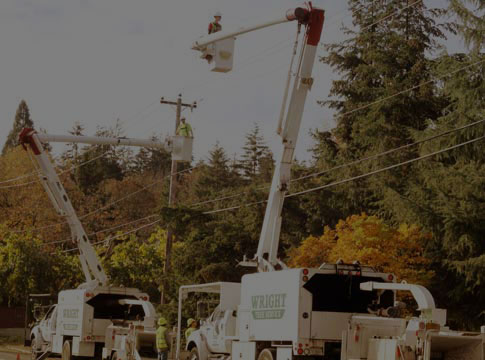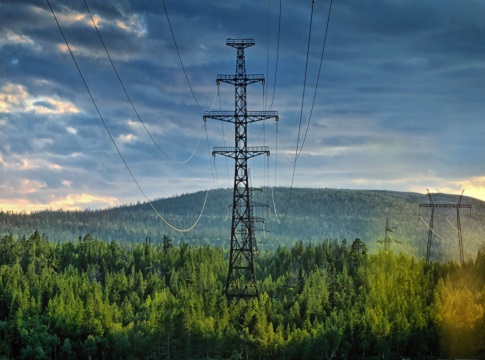Related News
Related News
-
September is National Preparedness Month: 3 tips to prepare your home & family
Let's "Be Ready" together!
Find Out More -
EWEB invests in preparedness for severe weather and natural disasters
Just as you take steps to safeguard your home and family, EWEB is investing in equipment and processes to ensure our community’s electric and water systems remain reliable in the face of adversity.
Find Out More -
EWEB prepares to re-energize the new Currin Substation
The rebuilt substation will increase load capacity, improve power reliability, and incorporate seismic resiliency to ensure service to our community for generations.
Find Out More -
Demand for EWEB electricity during heatwave nearly broke all-time summer record
Climate-driven weather extremes, home electrification, high-tech manufacturing and data centers will cause electricity demand to surge across the Pacific Northwest.
Find Out More -
EWEB explores rate increases to cover rising costs and to modernize infrastructure
Amid rising inflation and other challenges, rate increases are necessary to maintain reliable utility services and fund critical investments in Eugene’s water and electric infrastructure.
Find Out More -
EWEB prepares for rising energy demand as weekend heat wave arrives
Electricity supply is sufficient for now, but new supplies will be necessary in the years ahead to keep pace.
Find Out More -
EWEB preparing for expected surge in electric vehicles
Electric vehicle (EV) sales are poised to skyrocket in the years ahead as technology improves, more models hit the market, prices fall and regulations limit the sale of gas-powered vehicles. And EWEB is preparing for this surge.
Find Out More -
EWEB bids a fond farewell to College Hill Reservoir and prepares for modern drinking water storage tanks
Several hundred Eugene residents came together on May 30 for a Farewell Celebration at EWEB’s College Hill Reservoir before demolition and construction to build modern drinking water storage tanks begins later this year.
Find Out More -
Tips to stay cool while saving money this summer
June is quickly approaching, and that means summer weather is just around the corner. Before you turn up the air conditioning and see an increase in your utility bill, try these tips to prepare your home for warmer weather to keep your home cool.
Find Out More -
EWEB offering additional energy efficiency supplement to qualified customers
Current EWEB residential electric customers may qualify to double their energy efficiency rebates with a limited time supplement.
Find Out More -
EWEB opens application for 2024 Electric Mobility Community Grants
Grant awards of up to $30,000 to cover costs associated with electric mobility projects.
Find Out More -
Upgrades to Eugene's downtown electric network continue
You may have noticed construction this week on the corner of 7th and Pearl Street. That’s because crews replaced a corroded, aging vault with an innovative, new Voltek vault. The Voltek design allows for the new infrastructure to be built inside of the existing aging vault. We’re able to install the new vault while the cables are still energized, minimizing disruption to customers and traffic while cutting construction time in half.
Find Out More -
The Big Freeze 2024: After Action Report
Winter 2024 was one for the records books, and we'll look back on it for years to come and say, "That was a doozy!" The back-to-back January Ice Storms caused widespread damage to EWEB’s service territory, affecting approximately 38,000 customers. Preliminary repair costs were over $8 million, and additional repairs to transmission lines are still required.
Find Out More -
Celebrate Earth Month by taking charge of your home's energy use
This Earth Month, learn how you can reduce your energy usage to help protect our planet and reduce carbon emissions.
Find Out More -
Spring Cleaning? How about Spring Emergency Preparedness!
Spring is officially here and that means the plants are blooming, the sun is (sometimes) shining, and the grass is green! We've had our fair share of severe weather already, but spring weather is notoriously unpredictable. While you're in the midst of spring cleaning and garden care, consider completing these emergency preparedness tasks.
Find Out More - Show More
EWEB invests in satellite-based forestry analytics for vegetation management
May 30, 2024 • By Robyn Smith, EWEB Communications

Vegetation management is an essential tool in EWEB's power outage mitigation toolbox.
As we witnessed during the back-to-back ice storms in January, hazardous falling trees and snapped branches coming down on power lines create prolonged outages and unsafe working conditions during severe weather events.
That’s why, each year, crews trim over 500 overhead 'line miles' of vegetation to minimize falling trees and branches, avoid outages and increase the electric system's reliability.
EWEB maintains over 1,300 miles of overhead transmission and distribution lines. To aid crews in identifying hazardous vegetation growth in a sometimes heavily forested service territory, EWEB is utilizing a new satellite-based forestry analytics software called Overstory.
"Using remote sensing data, we help utilities optimize resources, mitigate risk, and strategically direct the vegetation management that matters most," said Overstory Customer Success Manager Kathryn Morse.
The first year's analysis (conducted in the fall of 2023) focused on areas with denser tree coverage, like south Eugene and McKenzie River service areas. The satellite imagery captures overhead power lines with nearby tree canopies and uses technology to quickly identify areas that could benefit from additional vegetation management. It also creates a heat map of places with high tree mortality—these 'hazard' trees are more likely to fall into powerlines during severe weather.
EWEB's Resiliency Program Manager Jeannine Parisi said, "The goal is to efficiently target tree-trimming in areas of highest risk and develop an action plan to address hazard trees that pose a fall-in risk to our overhead lines. It's especially helpful for terrain that's hard to access for visual inspection."

How the vegetation intelligence works:
- It creates vegetation data from remote sensing sources (detects tree height, health, and species).
- It combines data that matters most for EWEB (pole and line location, wildfire risk maps, trim specifications, terrain, and slope maps).
- It helps build a data-driven vegetation management program (management cycle prioritization, hazard trees, encroachment, reliability forecasts, and contractor audits).

In May, the Overstory team joined EWEB's vegetation crew in the field to review the first-year data analysis. In the field, the team easily located some of the riskiest areas.
"By looking at our risk matrix, utilities can identify the amount of vegetation nearby, both horizontally and vertically, to conductors, which helps us accurately project vegetation-related outages," said Morse.

Last year, Overstory satellite imaging analyzed vegetation across 180 ‘line miles' and found that EWEB's current vegetation management practices are very effective at maintaining clearance, with just a few areas that might need additional trimming work.
"We just captured new satellite imagery to update the analysis, particularly given the amount of tree damage from the ice storm," said Parisi. Overstory will analyze about 425 ‘line miles' of EWEB's electric system this year.
This forward-thinking vegetation management tool is just one example of how EWEB proactively invests today to prepare for a resilient tomorrow.
Related Programs
Trees are a major cause of power outages in the Eugene area. To help prevent tree-related outages we proactively prune trees to help keep our equipment clear.



